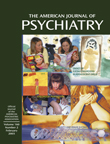In a much overlooked area of psychiatry, this slender paperback, with short chapters from 10 experienced contributors, addresses the special factors important for treatment of women with schizophrenia. Six of the 10 chapter authors are from hospitals and universities in Australia, where schizophrenia in general and particularly in women seems to be very much the same as in the Northern Hemisphere.
In an introductory anatomy chapter, Dr. Castle reviews the evidence for sexual dimorphism of the brain, citing in particular the preoptic area of the hypothalamus, total brain volume, and less consistent differences in other regions. This chapter reviews the reversal in later life of the relative excess of dopamine receptors in young men compared with young women. Is this related to the small second peak in schizophrenia incidence in postmenopausal women?
Focusing on an epidemiologic perspective, Drs. Mary Seeman and Paul Fitzgerald compress a great deal of material into 11 pages with 60 references. They note that women with schizophrenia differ from men not only in the well-known 2-year-later onset but also by superior premorbid status, better preserved social skills, fewer negative symptoms, fewer and briefer hospitalizations, and qualitative differences in delusional ideation. Emphasizing the importance of estrogen as a protective factor, they also note that there is often a need to increase the amount of prescribed neuroleptics after menopause to avoid relapse. Given the usual primary role of mothers in child care, the occurrence of schizophrenia in women often affects the entire family much more than is the case for men. Outcomes for children of women with schizophrenia are not discussed.
In chapter 5, “Hormones and Psychosis,” Drs. Jayashri Kulkarni and George Fink point out that between 1940 and 1970 there was more interest in psychoendocrine aspects of schizophrenia and that schizophrenia was definitely shown not to be caused by dysfunction of the gonads. The authors suggest that puerperal and postpartum psychoses may relate to increased sensitivity to hypothalamic dopamine, but they do not mention the many other sites where dopamine and estrogen receptors coexist in the brain, particularly the basal forebrain. A relationship of schizophrenic symptoms to phases of the menstrual cycle is suspected, but research in this area has been hampered by failure to standardize stages of the cycle in relation to remissions and exacerbations of schizophrenia. A reportedly favorable effect of estrogen administration in acute schizophrenia during the low estrogen stage of the cycle represents research that needs to be extended.
A chapter on reproductive, preconceptual, and antenatal needs of women with schizophrenia does not discuss the hypersexuality or hyposexuality that occurs in some women with schizophrenia but does give a great deal of practical advice for prenatal and postnatal care. In “Motherhood and Schizophrenia,” Drs. Jenny Hearle and John McGrath employ more “psychospeak” than is found in other chapters, e.g., “parenting,” “core symptoms,” and “attachment,” but they do not discuss the distortion of the mothering instinct that may be prominent and dangerous.
In a chapter discussing treatment, Drs. Fitzgerald and Seeman discuss the effects of drug treatment on libido and sexual function, prolactin, and cyclic variation for antipsychotic requirements in relation to the menstrual cycle. A summary chapter by Drs. Jill Goldstein and Richard Lewine includes an extensive literature review of some 200 citations. Only partly digesting this enormous amount of material, including genetic transmission and brain dimorphism, the authors of this final chapter ask, “Where do we go from here?” and answer with a few suggestions.
This book represents an enormous and useful condensation of social, anatomical, and endocrine factors and includes extensive references. As such it could be an indispensable introduction to what has been done and what needs to be done, redone, and extended in this very important area. Surprisingly lacking, even in a brief survey of this topic, are more data and discussion of the importance of endocrine receptors in parts of the brain outside the hypothalamus for both male and female schizophrenia, and the effect of having a child, husband, or father but especially a wife or mother with schizophrenia.

